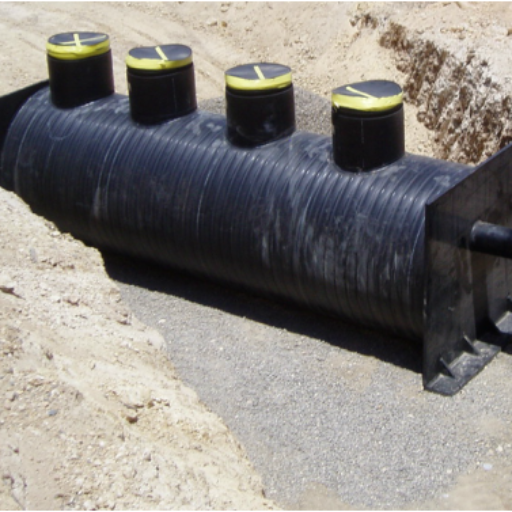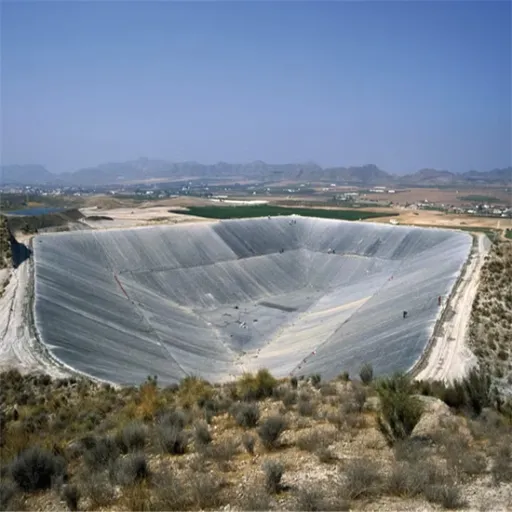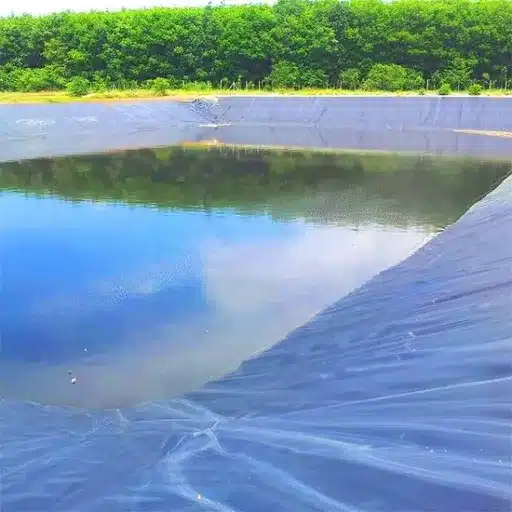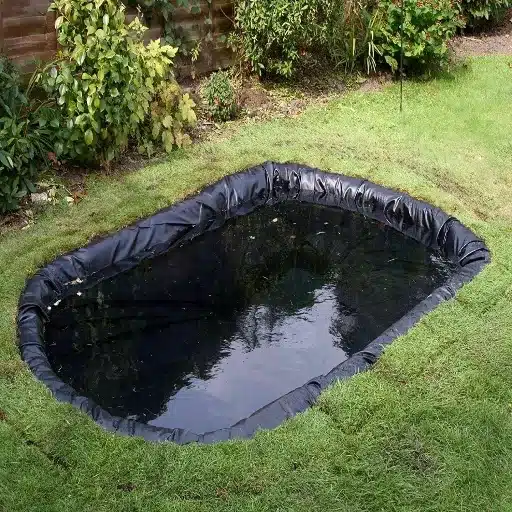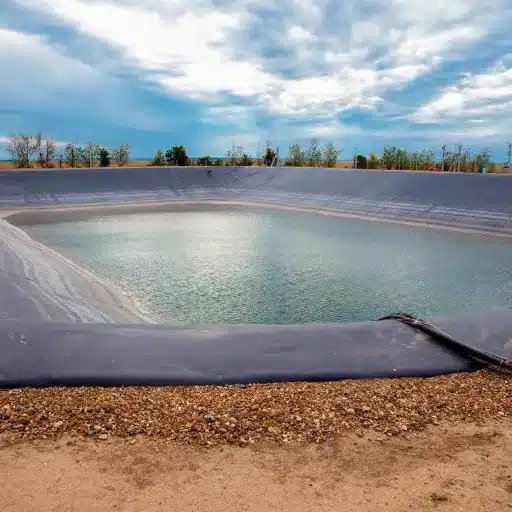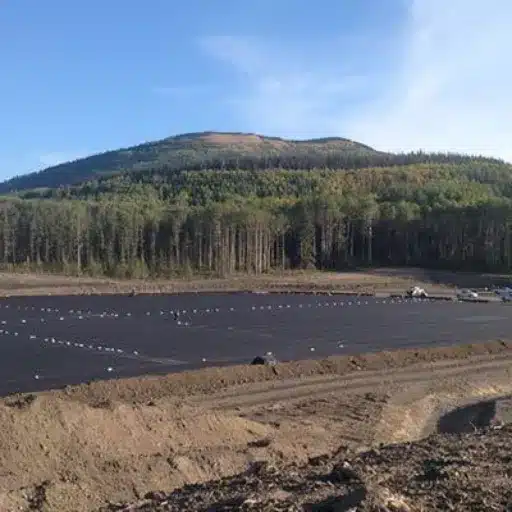The significance of stormwater filtration in urban water quality management and environmental protection cannot be overemphasized. With urban centers growing larger by the day and weather waxing unpredictable, the treatment of stormwater for pollutant removal has become an emergency. This blog uncovers the world of stormwater filtration systems and delves into their working mechanisms and why they are needed for sustainable water management. From addressing contaminants to helping curb urban runoff, we will take you through the major features of these systems to ensure an understanding of their relevance and functionality in the process of creating cleaner and healthier ecosystems. Stay tuned as we unpack the subject and solutions to proper stormwater treatment!
The Significance of Stormwater Management
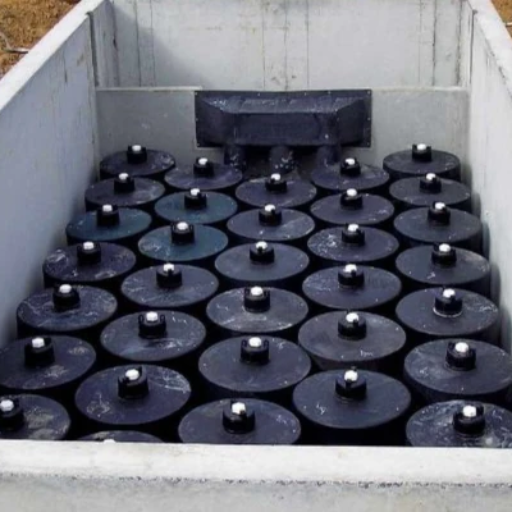
Stormwater management is crucial in lessening the detrimental effects urban runoff has on environmental conditions. It stops flooding, protects water quality by filtering out pollutants, and limits erosion within local waterways. When properly functioning, these systems manage the unwanted rainwater either by absorption or diversion so that the ecosystems flourish sustainably and municipal infrastructure is less harshly burdened.
Understanding Stormwater and its Effects
Stormwater generally means rainfall or melted snow that flows along with impervious surfaces such as roads, rooftops, or sidewalks. The Environmental Protection Agency (EPA) explains that urbanized areas with large impervious surfaces create much more runoff compared to natural land cover. For instance, in a natural forest, about 10% of rainwater becomes runoff, whereas urban developments could push value much beyond 55%.
With increasing volumes, stormwater runoff washes pollutants into water bodies, such as oils, sediments, and chemicals, while worsening the condition of water quality. The World Resources Institute states that stormwater runoff pollution is the number-one source of water pollution worldwide, thus affecting sources of drinking water and aquatic ecosystems. Green infrastructure measures, including rain gardens and permeable pavements, have proven capable of reducing runoff by a staggering 80%, thus replenishing groundwater and aiding flood mitigation at a regional scale.
Investing in stormwater management balances reducing immediate environmental impacts with long-term sustainability issues such as ensuring cleaner waterways and functioning communities.
Advantages of Efficient Stormwater Filtration
From a point of view of environmental and economic benefit, efficient stormwater filtration systems is backed by a large amount of recent data and research. According to the US Environmental Protection Agency (EPA), pollutants such as oils, heavy metals, and pesticides tend to accumulate in stormwater runoff and contribute to the degradation of aquatic ecosystems and water quality. Green filtration systems would help to reduce these contaminants quite significantly. In particular, the bioswale, a typical green infrastructure feature, can reduce stormwater suspended solids by 90% and heavy metals by 70%, according to a study published in 2023 by the American Society of Civil Engineers (ASCE).
To further elaborate, permeable pavements have been shown to hold back roughly 80% of surface runoff, said a 2023 White Paper from the Water Environment Federation, which ensures both groundwater recharge and mitigation of urban heat island effect. In addition to this, Philadelphia is reporting successful implementation of their Green City, Clean Waters program combining rain gardens and other green solutions, which has saved $5.6 billion in stormwater costs over traditional grey infrastructure.
Such systems further build the resilience of the communities as it tackles the urban flooding reduction in terms of occurrence and severity. Enhancing stormwater infrastructure could well reduce the annual damages caused by flooding by more than 30% to urban areas, estimates researchers from the University of California in 2022. The latest technologies combined with sustainable planning thus see stormwater management adjusted to climate behaviors of the future, benefitting ecosystems, infrastructure, and communities.
Various Pollutants in Stormwater
These pollutants may greatly affect the environment and public health when many of them can be carried through stormwater. Heavy metals rank high among common pollutants, along with nutrients, oil and grease, sediment, and pathogens. Heavy metals include lead, zinc, copper coming from vehicular traffic, and industrial facilities, which wash into water bodies through runoff. On the other hand, excess nutrients are mainly nitrogen and phosphorus from fertilizers or any “pollutants” that cause eutrophication, thereby deteriorating the quality of water and endangering aquatic life.
The latest US Environmental Protection Agency (EPA) report in 2023 stated that nutrient pollution is among the main contributors to harmful algal blooms (HABs) across the United States, putting fish populations and drinking water supplies in danger. In contrast, sediment pollution, usually caused by construction sites, erodes ecosystems by decreasing light penetration and crushing aquatic habitats.
Other growing concerns include new contaminants such as microplastics, pharmaceuticals, and personal care products. In 2021, the National Oceanic and Atmospheric Administration (NOAA) conducted a study that found microplastics in over 80% of the stormwater samples analyzed, offering long-term ecological hazards. Hence, this data stresses the utmost efficient intervention and filtration technology needed to combat the pollution of stormwater.
Types of Stormwater Filtration Solutions
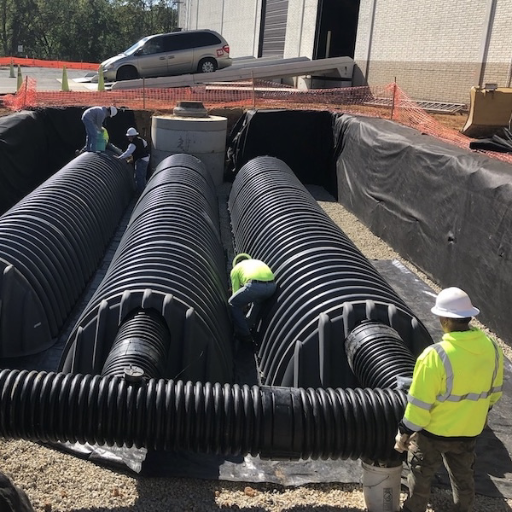
At present, many workable stormwater filtration systems are designed to work effectively. In this system, biofiltration systems feature rain gardens and vegetated swales, which allow soil and plants to filter pollutants naturally. On the other hand, advanced filtration technologies such as sand filters, cartridge systems, and hydrodynamic separators are available to target the pollutants of concern, such as microplastics and heavy metals. Hence, there are considerations to reflect upon in choosing which system will be applied to a particular site and in relation to what type of pollutants they are trying to treat.
Overview of Filtration Systems
Filtration systems are crucial when it comes to water management by controlling stormwater runoff and preventing pollution from entering natural water bodies. These systems strive to capture, filter, and eliminate contaminants effectively at an environmental level.
Biofiltration Systems
Biofiltration systems depend on natural processes where soil, vegetation, and microbe action remove pollutants from stormwater. Several studies have shown that well-designed rain gardens may reduce sedimentation, phosphorus, and nitrogen by up to 80% each from runoff. At the same time, they enhance groundwater recharge and sustain biodiversity locally.
Sand Filtration
The sand filtration systems are generally used for oil removal and contamination by suspended solids and organic matter. It is assumed that the system would eliminate about 85% of total suspended solids (TSS) and 60-70% of nutrients such as a phosphorus. One would readily select them because of their simple design, and maintenance is considered nearly negligible in some cases, especially in urban settings.
Cartridge Filtration Systems
Cartridge systems use replaceable filter cartridges for the capture of fine particles and certain pollutants. These systems show about 90% efficiency at the removal of TSS and greater than 50% for the removal of heavy metals. They work particularly well where space is limited or where enhanced filtration is needed.
Hydrodynamic Separators
Hydrodynamic separators are state-of-the-art means to remove sediments, oil, and floatables from stormwater; independent tests rated their TSS removal at up to 80%, giving them suitability for application in high flow or industrial zones. Nevertheless, serviceability is a requirement to maintain its efficacy through time.
Emerging Technologies
Among the recent developments infiltrate are media-enhanced filters and nanotechnologies that are being designed to tackle emerging pollutants such as microplastics and pharmaceuticals. For example, activated carbon filters may take away 90% of dissolved pollutants with newer treatments aiming at specific toxic compounds.
Media Filter: Working and Design
Media filters function by passing water through layers of porous media, such as sand, gravel, or specialized synthetic materials, to trap suspended solids and contaminants. Due to their broad use and efficiency, they find utility in irrigation systems, wastewater treatment plants, and industrial purposes. A normal sand filter is capable of eliminating particles of about 20 microns.
Recent technical improvements have greatly advanced the performance of media filters. For documentary examples, dual-media and multimedia filters combine layers of anthracite, sand, and garnet to improve filtration efficiency and increase dirt-holding capacity. Studies have shown that multimedia filters can reduce turbidity by over 90%, which makes them an excellent option wherever water clarity is fundamental.
In addition, automatic media filters incorporating backwashing have become prominent by reducing manual maintenance requirements. Research confirms that these systems will continue operating for extended periods with minimum intervention in upholding optimal flow rates and filtration performance. By incorporating Internet of Things (IoT) technologies, the latest media filters are capable now of monitoring water quality in real-time while adjusting their operations to promote even greater efficiencies and sustainability.
Applications of Sand Filters
Sand filters still counted as among the most dependable and widely utilized methods for water treatment across numerous industries. These filters effectively remove suspended solids and particulates from water. This makes them suitable for potable water treatment, swimming pools, and agricultural irrigation.
According to a 2023 report, recent data showed that sand filters for particles bigger than 20 microns can achieve up to 95% efficiency, making them an excellent choice for pretreatment systems in large-scale processes. Advances in media bed materials such as activated silica or garnet sand have dramatically improved the longevity and effectiveness of sand filters. Growing issues regarding water scarcity and stringent regulation audits on water reuse are expected to push sand filter demand in industrial water treatment at a CAGR of 6%.
Furthermore, the integration of IoT-enabled sensors in sand filtration systems has enhanced operational efficiency. With real-time data feedback on flow rates, pressure levels, and water quality parameters, these smart systems enable the operators to fine-tune the system operation while reducing energy usage by up to 20%. This innovation will pave the way for more sustainable and less costly water management solutions worldwide.
Technological Advancements in Filtration Systems
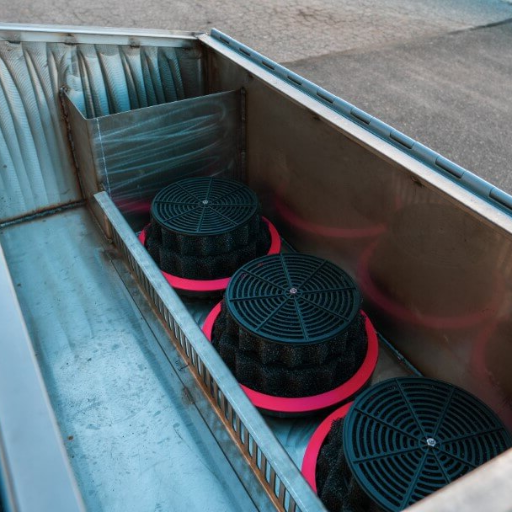
Filtration technology has without doubt seen thorough improvements and fine-tuning of the applications of IoT-based sensors in that efficiency and sustainability are heavily impacted. These systems provide real-time data that optimize the different treatments and cuts the power applied, a genuine revolution in water management.
New Materials and Technologies
The new water filtration solutions have developed novel materials like graphene oxide membranes and nanotechnology-based filter systems. Graphene oxide membranes act as one of the best Applicantstoras much as being capable of filtering out impurities of the smallest scale while permitting swift passage of water; according to Nature Nanotechnology, these membranes can pour salt from seawater with a gritty bearing of 99%, making it especially suitable for larger desalination operations.
Nanotechnology has opened the way for enhanced filtration through nanofiber membranes. These can filter pathogens, heavy metals, and microplastics-the increasing contaminants from the view. In fact, a 2022 market analysis highlights that the water and wastewater treatment market will reach $456 billion in 2032, largely driven by the integration of such leading-edge technologies.
Also, with an IoT-enabled filtration system, and the help of AI-powered analytics, we get timely actionable insights for water quality monitoring. For instance, cloud-connected sensors can predict when maintenance is required and optimize filtration performance to reduce energy usage by 30%, according to latest industry reports. These technological strides are crucial in addressing the issue of water scarcity globally while ensuring that all have access to clean, safe, and sustainably managed sources of water.
Filter Cartridges: Enhancements in Efficiency
Advances in filter cartridge technology have brought revolutions in water filtration, both in terms of efficiency and sustainability. Modern filter cartridges used high-capacity media such as activated carbon, polypropylene, or ceramic materials to achieve better filtration accuracy together with longer operational lifespan. Such multilayer cartridge designs were shown in recent studies to remove contaminants up to 99.9%, including heavy metals, microplastics, and harmful microorganisms.
Innovative structures that are pleated have a higher surface area for filtration;-hence higher flow rates and lower pressure drop, which is beneficial for energy efficiency. Nanotechnology is incorporated by some manufacturers, making ultra-fine filtration possible-aiding its effectiveness by capturing particles less than 0.01 microns in size. There is also a rise in the use of reusable and recyclable cartridge materials, directly reducing waste in its pursuit of environmental sustainability.
According to a report published in 2023, the global filter cartridge market is expected to register a CAGR of 6.5% between 2022 and 2030, being pushed up by the growing demand for clean water in industrial, municipal, and residential sectors. Next-generation cartridges with integrated IoT solutions can allow filtration performance tracking and issue alerts regarding cartridge replacement on an as-needed basis to guarantee that, at all times, the water system is running optimally and has an extended operational life. These centric technological advancements of filter cartridges are what build a solid platform to solve modern water treatment challenges.
Smart Technologies in Stormwater Management
Applications for smart technologies in stormwater management offer possibilities to fundamentally alter how cities manage water runoff. According to recent data, the global smart water management market is estimated to reach USD 44.2 billion by 2026, at a CAGR of 12.5% from 2021 to 2026. The technologies are primarily geared towards preventing urban flooding, enhancing water quality, and optimizing the use of existing infrastructure through better monitoring and data analysis.
IoT-enabled sensors have been integrating into stormwater systems as one of the many highlights. The sensors provide data on water levels, flow rates, and anything that could cause blockages in real time so that authorities can act quickly to prevent an overflow or reduce the risk of flooding. Moreover, these advanced software systems use machine learning algorithms to simulate rainfall patterns and forecast stormwater behavior, allowing for improved urban planning and resource allocation.
Other significant developments include the extensive implementation of green infrastructure monitored by digital tools. By way of permeable pavement and bio-retention, these solutions significantly lower stormwater runoff, which is subsequently tracked for efficacy via cloud platforms. These intelligent systems improve water infiltration while helping restore local hydrological cycles-warranty optimistic reinforcement for solving urban water issues.
With the deployment of these technologies, cities will be able to construct services that are more resilient and adaptive to serve on the immediate requirements of flood control as well as the long-term goals of environmental sustainability.
Benefits of Stormwater Filtration System Installations Across Cities
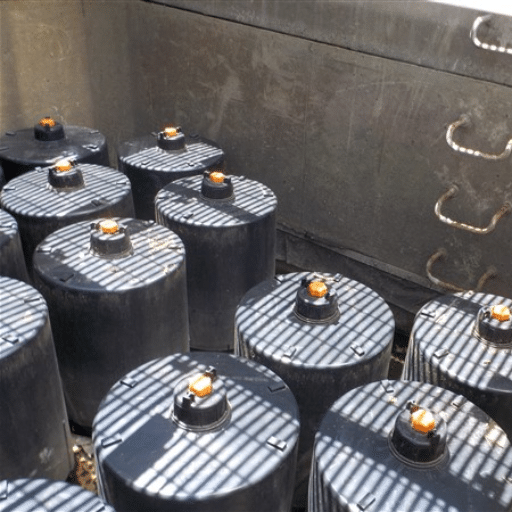
Stormwater filtration systems work together to enhance the life of cities by preventing water pollution and flooding and recharging groundwater. These systems prevent harmful pollutants such as chemical substances and debris from entering waterways, thus improving the quality of water and protecting aquatic ecosystems. Simultaneously, these systems help deal with huge volumes of rainwater from storms that pose a flood risk and create a lot of pressure on urban drainage systems. Finally, these systems serve towards sustainable management of water resources within a city and thus establish a healthier and resilient city.
Improving Water Quality in Urban Areas
In urban areas, typical challenges appear in maintaining water quality due to rapid urbanization, increased pollution, and an aging infrastructure. Still, by emboldening certain new professionals along the way, urban water systems could be transformed into green and resilient networks. According to recent data, worldwide, approximately 80% of urban wastewater is discharged into the environment untreated. This staggering statistic underlines the urgent need for effective water management solutions.
Green infrastructure solutions, which include rain gardens, green roofs, and permeable pavement, are essential in water quality improvement. Green infrastructure systems provide natural filtration for stormwater, removing pollutants, such as heavy metals, oils, and sediments, before the water reaches rivers or lakes. Studies by the Environmental Protection Agency (EPA) find that green infrastructure can reduce urban runoff pollutants by up to 80% and has a big impact on the health of localized waterways.
The investing of resources on more sophisticated water treatment technology is important. For instance, membrane filtration systems, ultraviolet (UV) disinfection, and reverse osmosis technologies have also trended upwards in adoption to provide clean and safe water supplies. A market analysis report shows that the global water treatment technology market grows at a compound annual growth rate (CAGR) of 7.7 %, with a projected worth of $95 billion by 2028, thus featuring the growing agenda toward water quality improvement.
Equally important are public education programs and community participation. Copenhagen and Singapore are among the foremost metropolitan systems that demonstrate how raising public awareness combined with government investment engenders sustainable urban water systems. Improved water quality consequently leads to programs that enhance human life while also protecting ecosystems. Together, these countermeasures will help maintain livable and resource-efficient urban environments for the future generation.
Mitigating Flood Risks and Erosion
Climate change is thus aggravating extreme weather events, increasing the urgency to watersheds flood risk mitigation and soil erosion. According to several recent studies, flooding in urban centers has spiked beyond any norm in the last decade, with economic damages worldwide hitting around $82 billion every year. A pertinent approach in mitigating this menace would be the installation of green infrastructure, including permeable pavements, rain gardens, and vegetated swales to allow soaking of excessive rainfall and reducing stormwater runoff. In Rotterdam, for example, modern flood management systems such as floating urban infrastructure have been put to work to protect the city from rising sea levels.
Moreover, reforestation in erosion-prone areas can serve as a natural means to stabilize soil and prevent sediments entering waterways. Data reveal that erosion levels in places affording good tree cover are 60-90% less than in bare lands. There is an upward trend in government technology use, such as geographical information systems (GIS) and predictive analytics, to flag high-risk regions and inform the prioritization of resources. Harnessing this state-of-the-art capability coupled with planning under sustainable urban paradigms allows go-ahead in reducing floods and erosion risks and thus securing safer livelihoods for its citizens.
Local Ecosystems and Biodiversity Enhancement
Indeed, protecting and enhancing local ecosystems represent indispensably complementary measures in tackling such environmental problems as erosion and climate change. Studies show that areas with diverse plant species can significantly stabilize soil, reduce water runoff, and support a variety of wildlife. For instance, an IUCN report states that wetlands, comprising merely 6% of the Earth’s surface, store more carbon than any other terrestrial ecosystem, thus making the conservation of wetlands paramount to climate change mitigation. Further, a recent evaluation from the World Resources Institute (WRI) has established that reforestation projects involving native species can improve biodiversity by 35-50% in expansively degraded landscapes within 10 years.
Continued and new advancements have now permitted entropy to play a growing role in monitoring and assessing biodiversity conservation. The use of machine learning and remote sensing technologies thus allows real-time monitoring of deforestation rates, tracking species migration patterns, and even predicting ecological collapse in an area. For example, recently researchers from the University of Cambridge have developed and employed AI-based systems to analyze more than 60,000 protected areas all over the world for the identification of key biodiversity conservation hotspots. Putting together these data-driven approaches with on-ground fieldwork is paving the way for scalable solutions to enhance ecosystems.
Thereafter, more focused, collaborative initiatives involving local communities and governments are crucial for the instance sustainability of ecosystem resilience. Investments in green spaces, stricter land-use policies, and sustainable agricultural practices will, in turn, restore the ecological balance while steadily healing the environment.
Challenges in Implementing Stormwater Filtration Systems
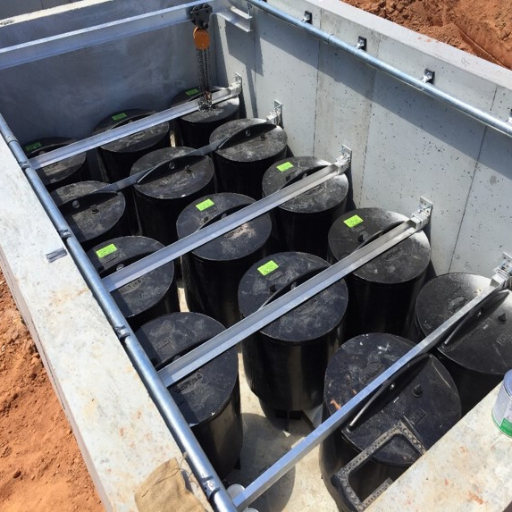
Stormwater filtration systems tend to be beset by challenges in their implementation-from the more prominent initial installation costs, maintenance needs throughout their existence, and limited funding possibilities. Besides, people may not endorse the system, thereby placing the implementation in a difficult position. Site-related constraints such as space and soil conditions may limit the installation of the systems in either one or more locations where these could be deemed efficient. Governments, local communities, and private stakeholders must work together to raise funds, educate the public about the systems, and ensure proper design and upkeep.
Regulatory and Compliance Issues
Regulatory and compliance issues are significant hurdles concerning the feasibility of implementing decentralized systems. For instance, historically, many regulations would change from place to place, some areas being subject to stringent environmental standards, whilst in others, there are not yet the Guidelines. According to recent data, in 2023, more than 70% of regions within the developed world have now adopted regulatory changes to encourage sustainable infrastructure; on the other hand, developing countries still lag behind due to enforcement challenges and resource constraints.
Compliance requirements such as obtaining permits and conforming to certain technical standards will, however, delay projects considerably. For instance, as highlighted in a recent case study in California, permit acquisition for a wastewater treatment system along can last up to 18 months. Delays act as discouragements for innovativeness and reforming of policy due to the cost escalations.
Adopting flexible and adaptable regulatory instruments is of the essence in combating these challenges. Leveraging technologies like GIS mapping and artificial intelligence-based compliance tools will fast forward permit approvals while monitoring actual compliance with set rules and standards. More importantly, regulatory agencies must cooperate with industry stakeholders in producing clear, practical rules balancing environmental protection with economic feasibility.
Cost Considerations and Funding Opportunities
On financial matters pertaining to regulatory frameworks, the costs of compliance must be weighed against funding opportunities. According to a newer study, investment in more advanced technologies, such as AI-based compliance systems and renewable energy solutions, offers an effective means to reduce operational costs from traditional approaches by roughly 30%. For instance, an official report by McKinsey shows that industries accepting automation and data-driven decision-making tools save millions annually in operational expenses.
In the arena of funding, several opportunities are in stock to assist organizations undertaking innovation within the restrictions of regulations. Governments and international bodies, such as the United Nations and the European Commission, have placed billions in green finance and subsidies towards sustainable development projects. Moreover, the Loan Programs Office of the Department of Energy in the US and grants from the World Bank are avenues for which business ventures planning for environmental sustainability can readily tap into resources. It is the combination of these financial incentives with cost-saving technologies that could present a win-win situation in achieving regulatory conformity and economic development.
Reference sources
1. The difference between tire wear particles and polyethylene microplastics in stormwater filtration systems: Perspectives from aging process, conventional pollutants removal and microbial communities
- Authors: Cong Men et al.
- Published: August 13, 2024
- Journal: Environmental Pollution
- Key Findings:
- This study compares tire wear particles and polyethylene microplastics in stormwater filtration systems.
- It discusses the aging processes of these materials and their impact on the removal of conventional pollutants.
- The research highlights the role of microbial communities in the filtration process.
- Methodology:
- The study employs experimental setups to analyze the filtration efficiency and pollutant removal capabilities of different materials.
- It includes microbial community analysis to understand the biological interactions within the filtration systems(Men et al., 2024, p. 124736).
2. Single and Combined Effects of Aged Polyethylene Microplastics and Cadmium on Nitrogen Species in Stormwater Filtration Systems: Perspectives from Treatment Efficiency, Key Microbial Communities, and Nitrogen Cycling Functional Genes
- Authors: Cong Men et al.
- Published: March 26, 2025
- Journal: Molecules
- Key Findings:
- The study investigates the effects of aged polyethylene microplastics and cadmium on nitrogen species in stormwater filtration systems.
- It finds that low-level polyethylene contamination significantly inhibits nitrate removal compared to cadmium.
- The research identifies key microbial communities and functional genes involved in nitrogen cycling that are affected by these contaminants.
- Methodology:
- The research utilizes metagenomic analysis to identify microbial communities and their functional genes.
- It assesses treatment efficiency through controlled experiments simulating stormwater conditions(Men et al., 2025).
3. Using corncob-based biochar to intercept BTEX in stormwater filtration systems
- Authors: Huannan Wang et al.
- Published: November 1, 2020
- Journal: Water Science and Technology
- Key Findings:
- The study evaluates the effectiveness of corncob-based biochar in adsorbing BTEX (Benzene, Toluene, Ethylbenzene, and Xylene) in stormwater filtration systems.
- It concludes that the biochar demonstrates significant pollutant adsorption capabilities, which can enhance biodegradation processes.
- Methodology:
- Batch experiments were conducted to analyze adsorption kinetics, isotherms, and thermodynamics.
- Dynamic transport experiments and model simulations were used to assess the feasibility of biochar application in stormwater filtration(Wang et al., 2020, pp. 1858–1867).
Frequently Asked Questions (FAQs)
What is a stormwater filtration system?
Stormwater filtration systems are engineered solutions that treat and remove pollutants from stormwater runoff to improve water quality. These systems use various media and devices to trap suspended solids, soluble metals, and other contaminants in stormwater before releasing it into natural water bodies.
How do the stormwater filtration systems improve water quality?
Stormwater filtration systems improve water quality through the removal of pollutants of concern via filtration media, such as total phosphorus, organic material, and trash. The treatment of stormwater runoff helps to protect the water environment into which the effluent must be discharged as per regulatory controls for healthier ecosystems.
What filtration devices are used for stormwater management?
Different filtration devices used in stormwater management include sand filters, media filtration systems, and filtration chambers. Each of these uses different filter media, such as sand filter media and organic media, so as to treat stormwater runoff effectively and improve pollutant removal efficiencies.
What is the function of the best management practices in stormwater filtration systems?
BMPs are key stakeholder groups that oversee the design and implementation of systems for effective management of stormwater. This includes optimization of pollutant removal and filtration efficiency, as well as compliance with local stormwater management plans.
How does the sand filter function in stormwater filtration?
Taking in stormwater runoff, the sand filter allows for it to percolate through the sand filter media that traps suspended solids and pollutants. The media acts as a physical barrier and treatment system biologically that encourages adsorption and microbial activity in purifying the water further prior to its final discharge into the drainage system.
What are the advantages of being the underground stormwater filtration system?
An underground stormwater filtration system provides certain benefits such as saving surface space, reducing surface runoff, and great aesthetics. Because places in urban environments generally have little or no surface space, these systems are thus a good alternative to the treatment of runoff without compromising the visual appeal of the area.
Which media filtration types are present in stormwater treatment?
Media filtration in stormwater treatment refers to various configurations, including gravel beds, sand filters, and specially engineered filter cartridges. Each type aims to address certain pollutants, with maximized filtration process optimization in mind, to ensure that water quality benefits are greatest given the different site conditions.
What are the benefits of employing stormwater filtration systems in Minnesota?
In Minnesota, stormwater filtration systems need to evolve around the guidelines laid out in the Minnesota Stormwater Manual. These systems are designed to treat stormwater runoff from innumerable sources, including parking lot runoff, in a manner that accommodates state regulatory requirements and environmental concerns.

